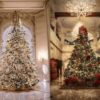Jewelry and Artifacts Associated with Royal Power: Symbols of Authority, Wealth, and Tradition

Throughout history, jewelry and artifacts have played an integral role in symbolizing power, prestige, and the divine right of kings and queens. These objects have not only served as decoration but also as significant markers of the monarch’s authority, cultural identity, and lineage. From coronation regalia to personal heirlooms, royal jewelry and artifacts are imbued with rich symbolism, reflecting the political, social, and spiritual roles that the monarchy plays in society. This article will explore the history, symbolism, and significance of jewelry and artifacts that are closely tied to royal power across various cultures.
1. Crowns and Diadems: The Ultimate Symbols of Sovereignty
Arguably the most iconic of all royal accessories, the crown represents the monarch’s sovereignty and divine right to rule. Crowns have been worn by kings and queens throughout history, and each design is imbued with cultural significance and regal power. Crowns are typically crafted from precious metals, adorned with jewels, and designed to fit the specific symbolism of the royal family or state they represent.
The British Crown Jewels, for example, consist of a collection of regalia that includes the St. Edward’s Crown, used during the coronation of British monarchs. This crown, crafted in 1661, is made of gold and is set with a vast array of diamonds, sapphires, and other precious stones. It is said to symbolize the divine power of the monarch and their role as protector of the nation. The crown, along with other pieces like the Imperial State Crown and the Queen Mary’s Crown, holds profound historical significance. They are not only used in state ceremonies but also serve as powerful emblems of the royal family’s centuries-old tradition.
In ancient Egypt, the pharaoh’s crown was also a symbol of divine rule, with different crowns representing various aspects of the pharaoh’s power. The Double Crown of Upper and Lower Egypt combined two distinct crowns to signify the unification of the nation under the pharaoh’s rule. The Uraeus, a serpent, was often included in the design of the crown, symbolizing protection, authority, and the divine.
Diadems, often worn by queens and empresses, are similar to crowns but are typically smaller and more delicate. These headpieces, often encrusted with gems and pearls, symbolize the beauty and power of the wearer, elevating her status and reinforcing her role as a leader. Queen Elizabeth I of England, for example, wore intricate diadems and jewels that enhanced her authority and highlighted her royal status.
2. Scepters and Maces: Instruments of Power and Justice
A scepter is a ceremonial staff or rod that serves as a symbol of the monarch’s authority and governance. It is often presented to the ruler during coronation ceremonies and is held during official state events. The scepter, typically made of gold and adorned with gemstones, is more than a mere accessory—it is a symbol of the monarch’s ability to rule justly and administer power.
In Europe, the Sovereign’s Scepter with Cross, part of the British Crown Jewels, is one of the most famous and significant pieces of regalia. It features a large diamond at its apex, symbolizing the monarch’s divine right to rule, and it is used during the coronation to signify the ruler’s control over both temporal and spiritual matters.
Similarly, maces are ceremonial objects that were often used by kings and queens as symbols of justice and authority. In the British Parliament, the Golden Mace is a key part of the state opening of Parliament, where it is placed on the central table to represent the monarch’s authority over the legislature. The mace is carried in processions as a sign of royal power and the ability to uphold the laws of the land.
Throughout history, scepters and maces have been closely associated with the concept of kingship. They were used to signify that the monarch was a figure of ultimate power, capable of both ruling and protecting the realm. These items also have a deeper connection to the ruler’s divine or sacred status, particularly in cultures where kings were seen as gods or representatives of deities on earth.
3. Rings: Personal Heirlooms of Royalty
Royal rings have always been more than just ornaments—they are significant symbols of power, authority, and personal commitment. Rings often represent the continuity of the royal family, with royal houses passing down rings from generation to generation. These pieces of jewelry are steeped in tradition and history, often bearing intricate engravings, gemstones, and crests that signify royal lineage and authority.
The Signet Ring was a key symbol of power in many royal courts. Used by monarchs to seal documents and letters, the signet ring served as a mark of authenticity, ensuring that the document was sanctioned by the monarch. The British royal family, for example, used rings with the royal crest or coat of arms to authenticate royal correspondence and legal documents.
One of the most famous rings in history is the Engagement Ring of Princess Diana, now worn by Kate Middleton, the Duchess of Cambridge. The sapphire and diamond ring, with its blue hue, has become a symbol of royalty, love, and commitment, signifying not only the royal connection but also the personal bond between the monarch and their people.
4. Jewelry Boxes and Cases: Storing Royal Wealth and Treasures
Jewelry boxes and cases serve as more than just containers for royal jewels; they symbolize the wealth and opulence of the royal family. These ornate cases are often designed with intricate carvings, inlays, and precious materials to protect the priceless treasures they hold. The jewelry box was historically considered an essential piece of royal furniture, as it provided a safe and secure place for valuable objects.
In many royal palaces, jewelry boxes were crafted from precious woods such as mahogany and decorated with ivory, gold, or enamel. The design of these boxes often reflected the artistic style of the period, whether Baroque, Rococo, or Art Deco. Some boxes were fitted with mirrors, secret compartments, and intricate locks, ensuring that the jewels were safeguarded.
In the Imperial Palace of Russia, the Fabergé eggs—ornate, jeweled eggs designed as luxury gifts for the Russian tsars—are perhaps the most famous examples of royal treasures. These eggs were not only masterpieces of craftsmanship but also served as jewelry boxes, holding intricate treasures within. Fabergé’s creations became synonymous with the wealth and splendor of the Russian imperial family.
5. The Royal Necklace: A Symbol of Wealth and Royalty
The necklace is one of the most personal forms of royal jewelry, often passed down through generations as a symbol of lineage and legacy. These elaborate pieces are typically made from precious metals and encrusted with diamonds, pearls, and other rare gemstones. Royal necklaces are not only worn during important occasions but also serve as emblems of the monarch’s wealth, taste, and status.
The Necklace of the Empress of Russia is a famous example of royal jewelry. This necklace, made of diamonds, was worn by Empress Maria Feodorovna and later by Empress Alexandra Feodorovna. The design of the necklace was inspired by the imperial crown, symbolizing the wearer’s connection to the throne and royal authority.
Similarly, the Crown Jewels of Denmark include a royal necklace that is worn during coronation ceremonies. These necklaces, made of diamonds and other precious stones, are considered important symbols of Denmark’s monarchy and are used in state functions to demonstrate the royal family’s wealth and power.
6. The Royal Tiara: Elegance and Tradition
A tiara is a quintessential piece of royal jewelry, often worn by queens, empresses, and princesses. Tiaras are generally crafted from platinum, gold, or silver and are often encrusted with diamonds, emeralds, and sapphires. These pieces of jewelry are reserved for special occasions such as balls, weddings, and royal ceremonies.
One of the most famous royal tiaras is the Queen Elizabeth’s Tiara, also known as the Girls of Great Britain and Ireland Tiara. Made in 1893, this tiara is often worn by the British queen during state occasions and is a symbol of royal elegance. The Russian Imperial Tiara, worn by the last Empress Alexandra Feodorovna, is another example of a regal tiara with deep historical significance. The tiara was made in the early 20th century and was passed down through the Russian royal family, symbolizing the imperial grandeur of Russia.
Tiaras are not only symbols of beauty but also of power. Historically, they have been associated with the marriage of monarchs, and they are considered a sign of a queen’s authority and status. The act of wearing a tiara can be seen as a declaration of royal heritage and sovereignty.
7. Symbolic Jewelry: The Amulets and Charms of Royalty
Throughout history, monarchs have worn amulets and charms to ward off evil, ensure good fortune, and protect them from harm. These pieces of jewelry often have spiritual significance and are believed to bring divine protection or blessings.
In ancient Egypt, pharaohs wore jewelry adorned with scarabs, symbols of rebirth and protection. The Eye of Horus, also worn as a pendant or charm, was believed to have protective qualities and was often placed in royal tombs to safeguard the deceased pharaoh’s journey to the afterlife.
In medieval Europe, monarchs wore amulets and talismans made from precious stones or metals believed to possess magical properties. For example, ruby was thought to confer strength, emerald for wisdom, and pearl for purity. These items served not only as adornments but also as symbols of the monarch’s connection to divine power and protection.
Conclusion: The Timeless Significance of Royal Jewelry and Artifacts
Jewelry and artifacts associated with royal power are more than just luxurious accessories—they are rich in symbolism, history, and cultural significance. From crowns and scepters to necklaces and tiaras, these pieces serve as powerful symbols of authority, lineage, and wealth. They are not just worn for their beauty but as representations of the monarch’s role as the ruler, protector, and divine representative of their people.
As we look back at the regalia of various monarchies around the world, we can see that these items transcend mere decoration. They are markers of history, culture, and power—elements that have shaped the identity of royal families and their relationship with the world. Through their jewelry and artifacts, monarchs continue to assert their place in history, carrying with them the legacy of past rulers and the symbols of their authority.

